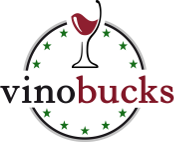Champagne Bollinger, based in Ay, the centre of the best Pinot Noir vineyards in Champagne, has maintained its independence for almost 200 years. Pinot Noir sets the pace here. Over 170 hectares of its own vineyards with 85% Premier and Grand Crus guarantee quality and continuity. The majority of the base wines are vinified and aged in over 3500 used wooden barrels, which gives them stability and additional complexity. For the Bollinger Special Cuvée Rosé and PN, reserve wines are stored in magum bottles under natural cork, in keeping with an old tradition and now unique in Champagne. Champagne - Aÿ - mid-1960s: When most champagne houses turned their attention to developing new designs for their bottles and packaging, Champagne Bollinger concentrated on defining itself through individual taste. Although old vintages were not fashionable in the 1960s, in 1967 Madame Bollinger, motivated by her bold and visionary thinking, decided to present a recently disgorged old vintage (1952) with a very low Extra Brut dosage.
Madame Bollinger offered the world a completely new wine & taste experience. She contrasted exceptional freshness on the palate - thanks to the natural acidity of the grapes at harvest and the additional Extra Brut dosage - with the aromatic intensity of a (at the time) greatest vintage, which was already characterized by its long ageing on the lees. This was a truly revolutionary moment that changed the style of the House of Bollinger and that of champagne in general forever. 1952 Bollinger R.D. was the world's first champagne with the disgorgement date listed on the label. Aging is one of the five pillars of Bollinger's winemaking. The best vintages require patience and perseverance. The long time that the wine spends on the lees allows it to develop its aromas in a very special way. But it is the one moment, the moment of disgorging - perfectly executed, of course - that makes the Bollinger R.D. what it is. Basically, the base wines are fermented in oak barrels; the riddling and disgorging are done by hand in the traditional way. There are two ways to experience the R.D. The first is to open it the year after disgorging, when the wine reveals complex fruit aromas. The second way requires a few years in the cellar, during which the cuvée develops its full aromatic potential of a wine from a great vintage. Only exceptional vintages become an R.D.: namely those whose great aromas combine with the potential for long maturation.


